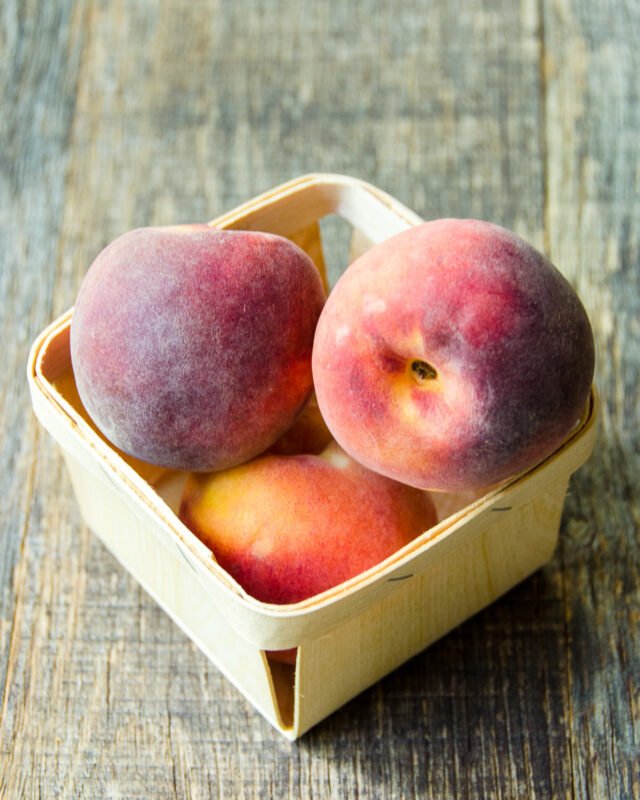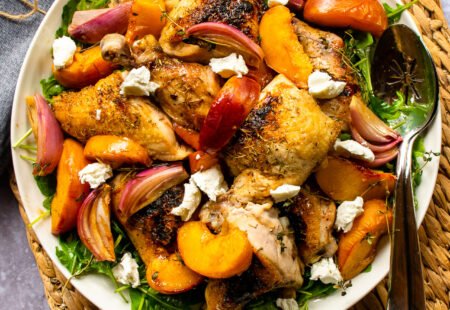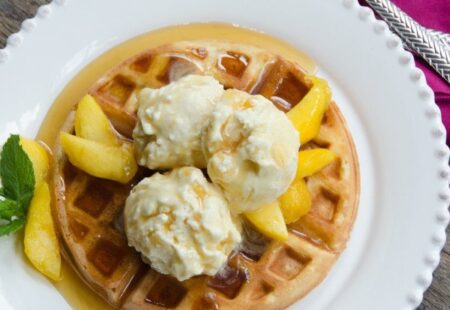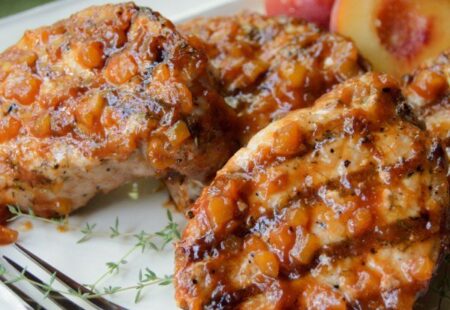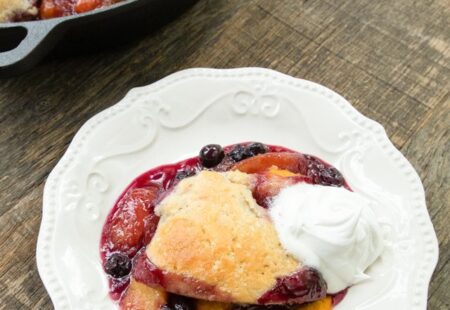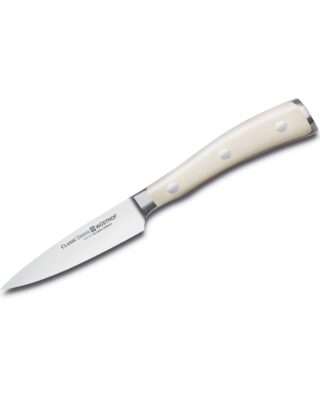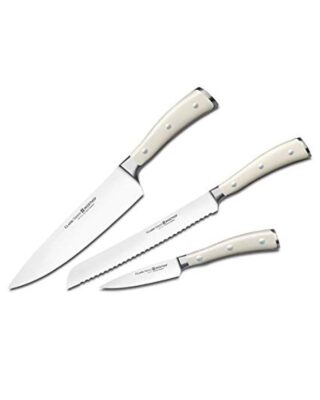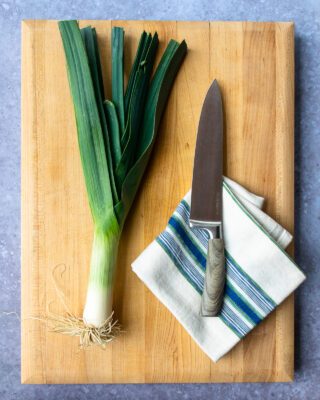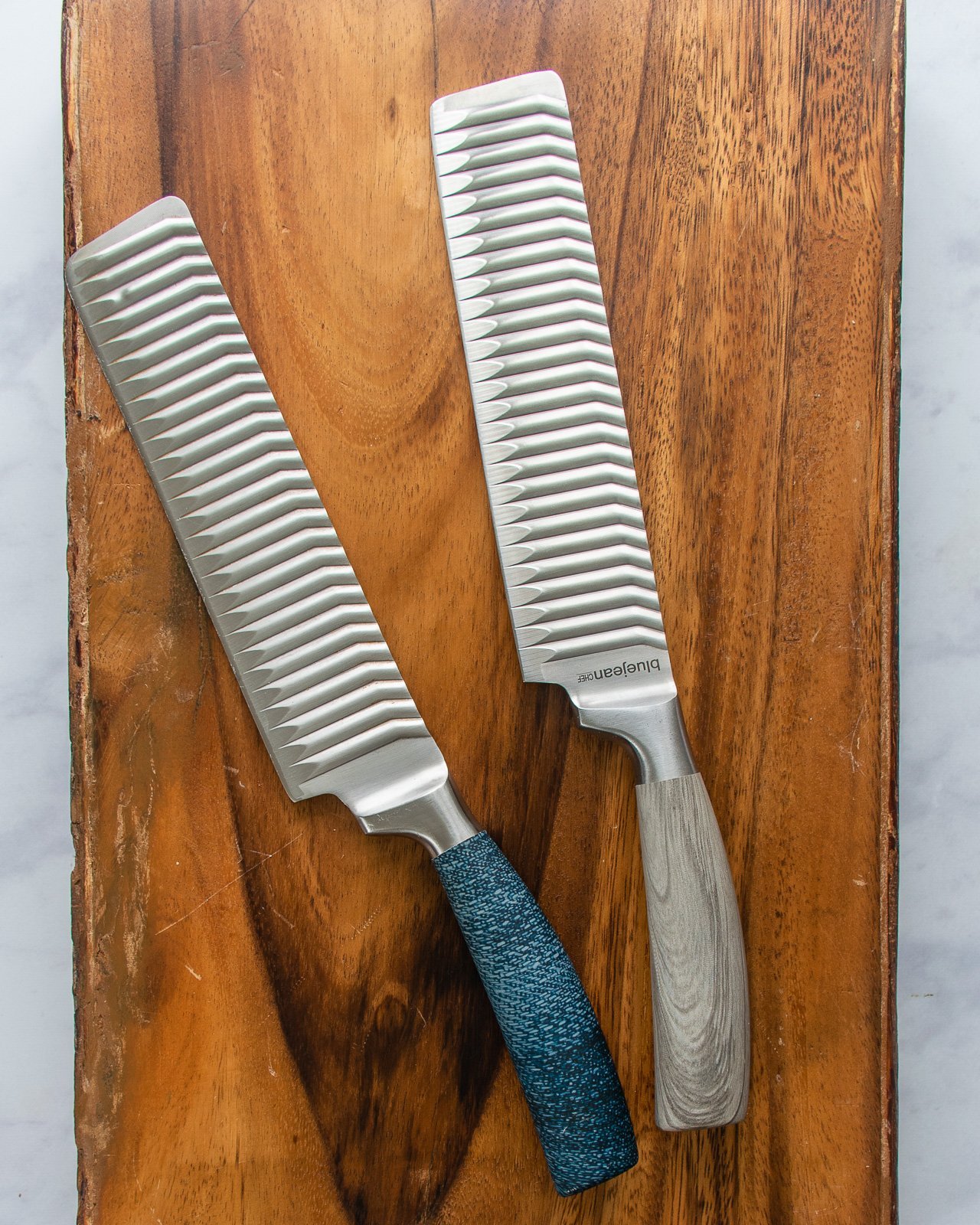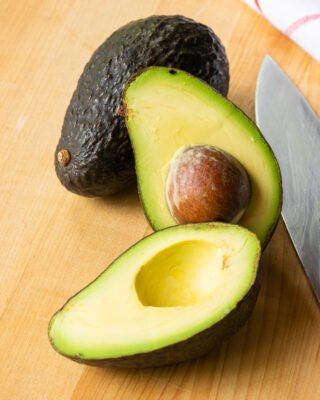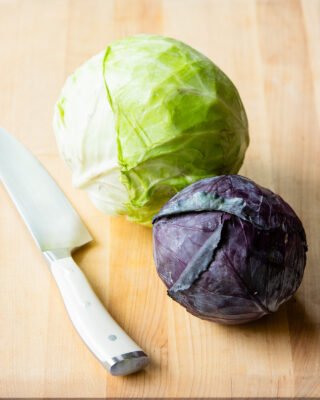When are Peaches in Season?
Peaches are in season in the summertime, but the season varies a little by location. The warmer the climate, the earlier the peaches will be available. You can read more about the different seasons by geography here. The best months overall for peaches are from mid-June through August.
Varieties of Peaches
While there are more than 300 varieties of peaches in the world, we generally narrow this down to four different types.
- Yellow Peaches – these peaches have a pale to orange-yellow colored flesh and sometimes can have streaks of red too, especially closer to the pit.
- White Peaches – this type of peach has a pale-yellow or white flesh and a lower acidity than the yellow. Some people find white peaches sweeter, but that’s hard to tell when so much of the sweetness depends on the ripeness of each individual peach.
- Donut Peaches – donut peaches or Saturn peaches are a flatter variety of peach that is also lower in acidity and therefore taste quite sweet. They are easy to prepare with a very small pit in the center.
- Nectarines – nectarines are a genetic variation of peach that has a smooth rather than fuzzy skin. Many people prefer a nectarine for that very reason.
Freestone vs Clingstone Peaches
All varieties of peach fall into one of two (or three) categories. Freestone peaches are those whose flesh pulls away from the pit easily. These tend to be a little larger and less juicy than their counterparts, but they are much easier to eat and work with. If you’re intending to cut the peach into nice wedges for a peach upside down cake, a pizza or for this sheet pan dinner with chicken, freestone peaches should be what you’re looking for. They are more readily available later in the season.
Clingstone peaches, on the other hand, have flesh that clings to the center pit. They are smaller than freestone peaches, and while they are harder to prepare, they are juicier and sweeter. These peaches are good for canning or preserving or baking when the look of the peach doesn’t matter as much. They would be perfect to make this peach BBQ sauce. Clingstone peaches are more common at a farmer’s market than in our grocery stores.
There is a third variety of peach which is a cross between the two – semi-freestone peaches. These have the best of both worlds – easy to remove from the pit AND juicy and sweet.
How to Choose a Peach
There are few things more disappointing that biting or cutting into a peach that is under-ripe. To avoid this, look for the following traits when selecting peaches from your grocery store or farmer’s market:
- The area around the stem should be a nice yellow (for yellow peaches) or a pale yellow/white color (for white peaches). Green around the stem indicates that it is not yet ripe.
- The peach should have a little give when you squeeze the fruit gently.
- It should feel heavy for its size.
- A ripe peach will smell like you hope it tastes.
- Look for a well-defined crease.
How to Store Peaches
Store peaches at room temperature to let them come to the right degree of ripeness. (You can keep them in a paper bag with an apple or a banana to speed up the ripening process.) Then, pop them into the refrigerator crisper drawer to stop them from becoming over ripe. They’ll keep nicely for 5 to 7 days.
You can also prepare peaches and freeze them for later use. Prepare them by peeling and slicing them and then freeze the pieces on sheet pans. When frozen, store the peach pieces in zipper sealable plastic bags until you’re ready to use them.
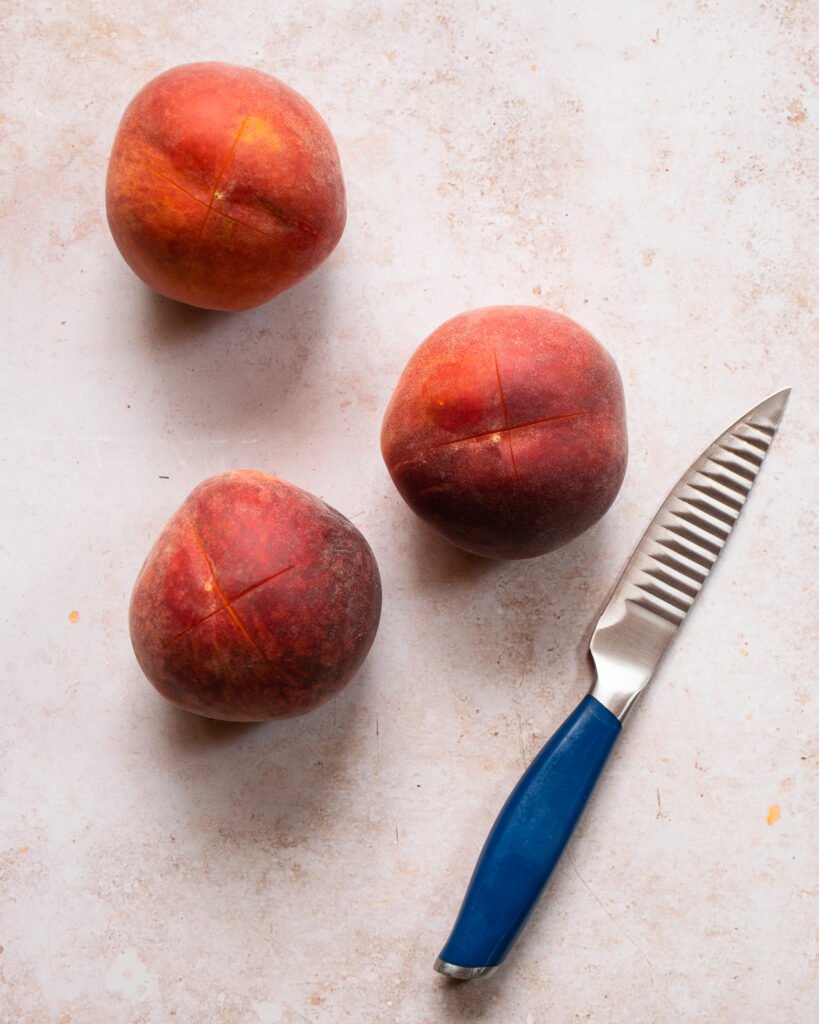
How to Peel a Peach
While it is possible to use a peeler to remove the fuzzy skin of a peach, that method removes a lot of the delicious flesh at the same time. That is a crying shame and there’s another very simple way. Start by bring a large saucepan of water to a boil and making an ice bath in a large bowl. Then, score the peaches with an “X” on the bottom. Submerge the peaches in the water for 30 to 60 seconds and then plunge them into the ice bath for a minute. If the peaches are ripe, the skin will be super easy to just pull off the fruit, almost falling off the flesh. Then, you can slice or dice the peach as needed knowing you haven’t wasted a single juicy piece.
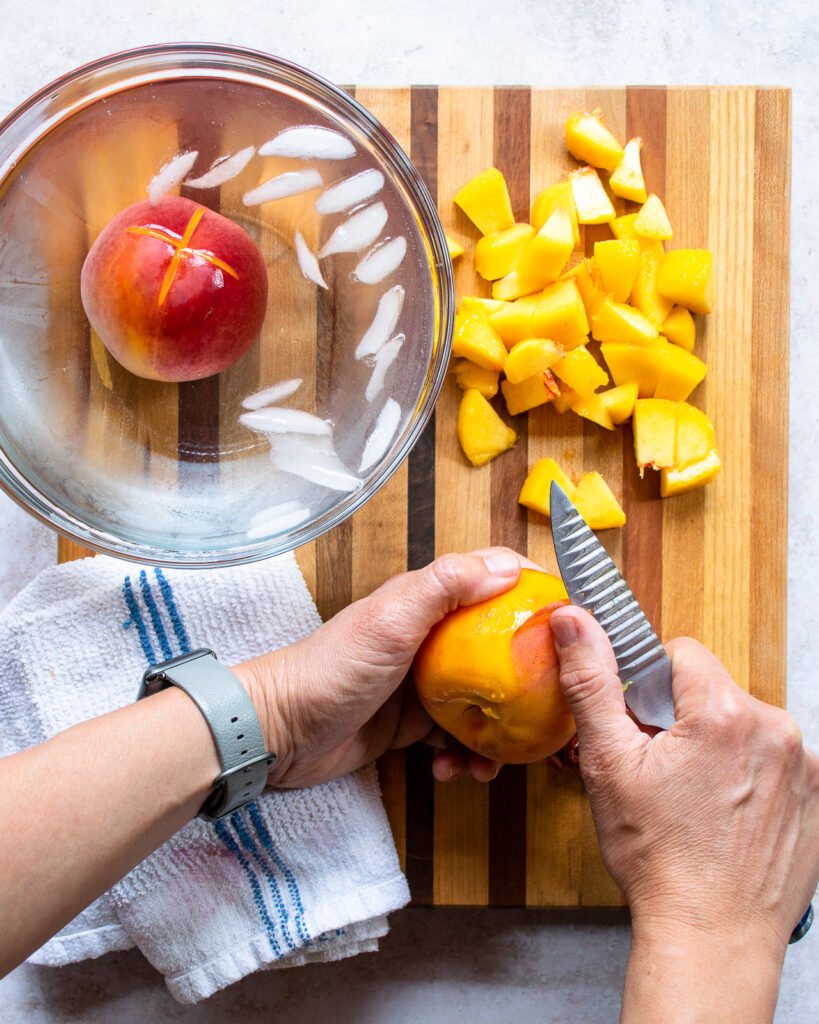
Quick Notes:
- Peaches are in season from mid-June through August.
- There are over 300 varieties of peach, but 4 main categories: yellow, white, donut (or Saturn) and nectarines.
- Freestone peaches pull away from the pit more easily and are more readily available later in the season.
- Clingstone peaches are juicier and sweeter than freestone, but harder to prepare.
- Choose a peach that is yellow or white around the stem (not green), is slightly soft to a gentle squeeze, heavy for its size, has a well-defined crease and smells like you hope it tastes.
- Store at room temperature until the desired level of ripeness has been achieved. Then store in the crisper drawer of the fridge for up to a week.
- Peel peaches by scoring, blanching and shocking first. The peels will then remove easily.
